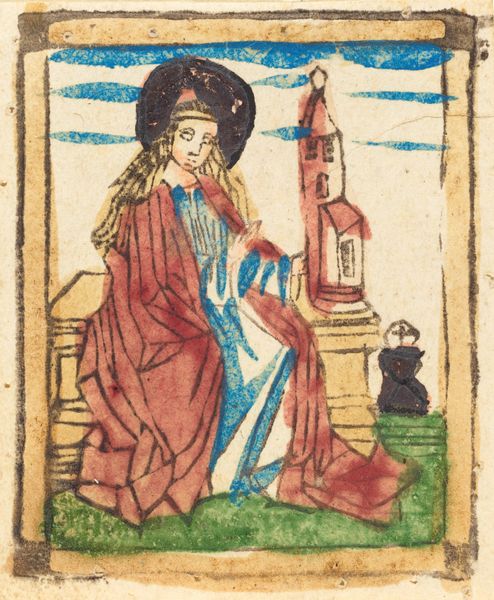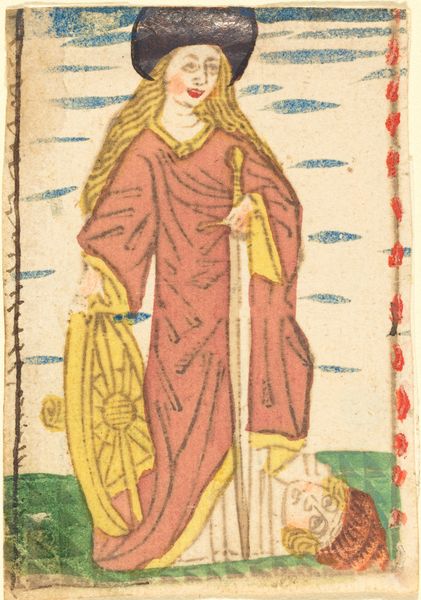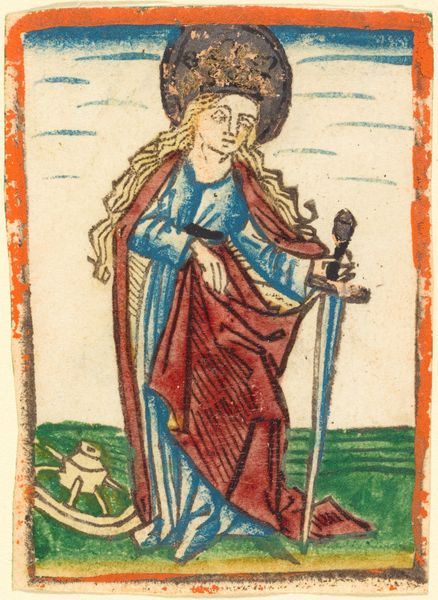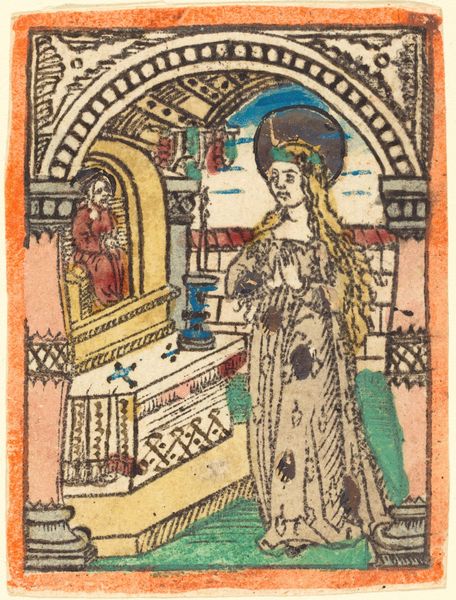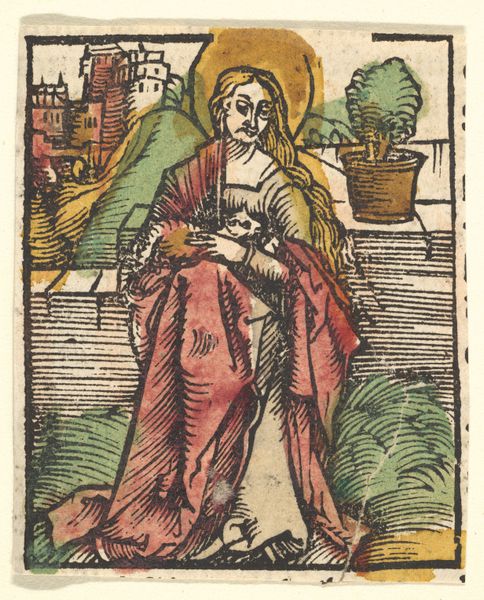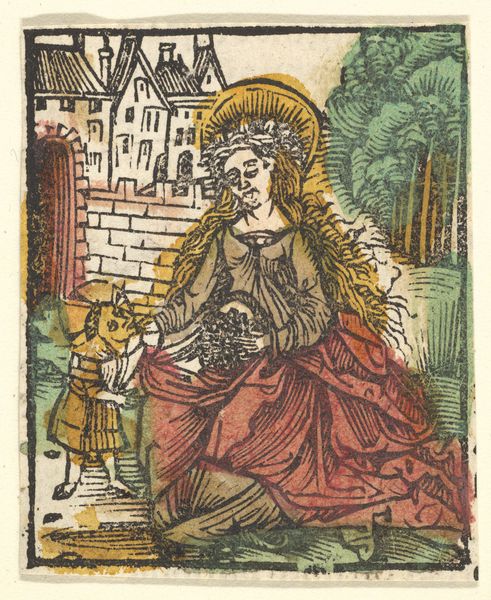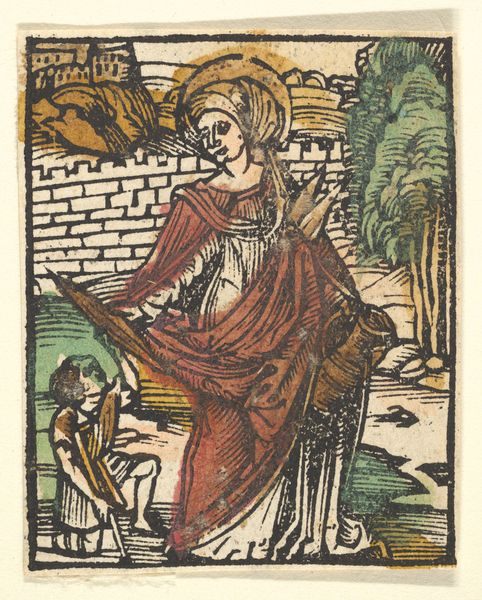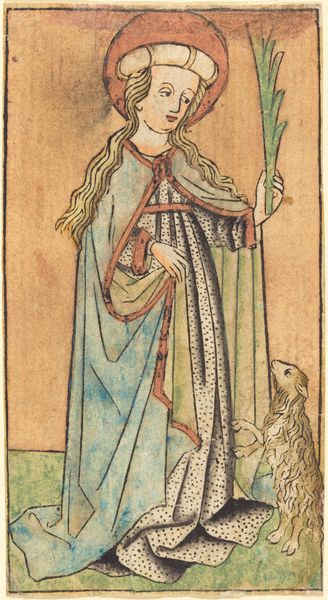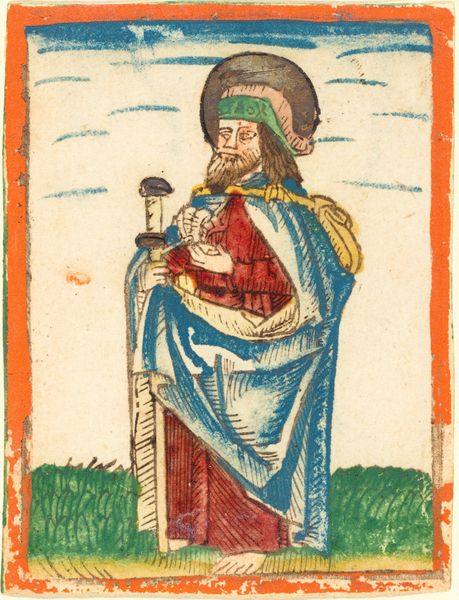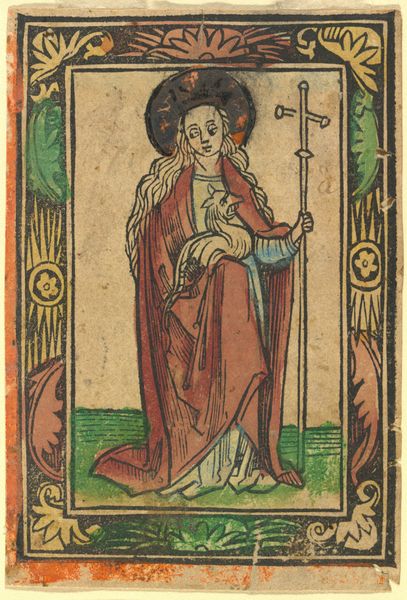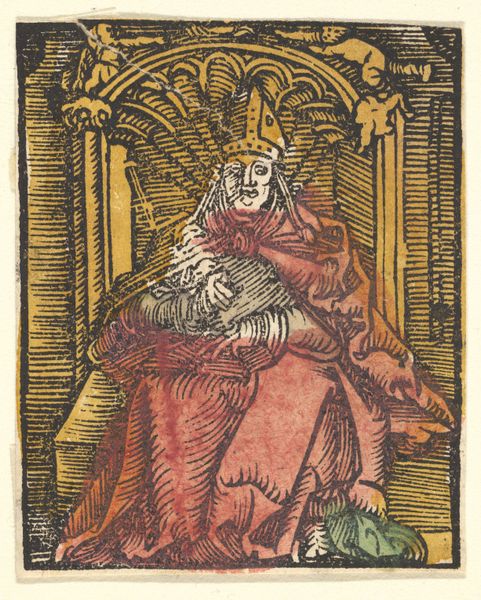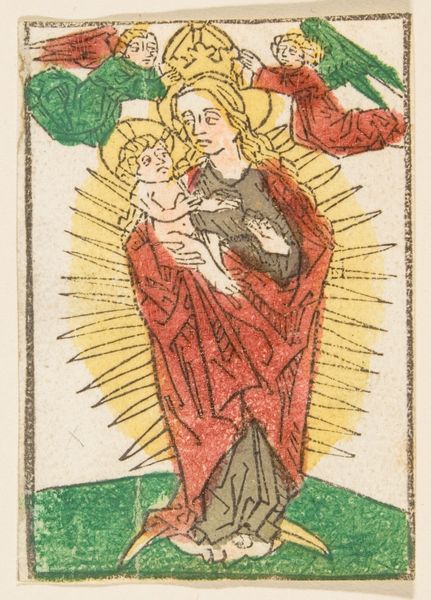
coloured-pencil, print
#
coloured-pencil
#
medieval
# print
#
figuration
#
coloured pencil
#
history-painting
#
northern-renaissance
Copyright: National Gallery of Art: CC0 1.0
Curator: This small print, "Saint Barbara," was created sometime between 1460 and 1470. It is made with coloured pencil, characteristic of Northern Renaissance art. Editor: There's something instantly captivating about its intimacy. The limited colour palette – mostly muted blues, reds, and greens – evokes a dreamlike state. And she almost seems melancholic in her gaze. Curator: The depiction of Saint Barbara in the Northern Renaissance carries complex historical and social weight. During this period, the cult of saints, like Barbara, often served as a vehicle for expressing communal identity and aspirations in the face of significant social upheaval and the looming presence of the Church. Barbara, notably the patron saint of armourers, artillerymen, miners and others who worked with explosives, reflects anxiety over sudden death and danger. Editor: The fact that Barbara is frequently called upon as the patron saint of those dealing with explosives offers insights into gender roles within this medieval, religious framework. Though confined by societal norms of the time, here's an association with power typically dominated by male roles; the print suggests the feminine is not totally detached from a world of explosions or danger. Curator: Exactly, and we can even read the tower behind her in symbolic terms. Legend dictates she was imprisoned in a tower by her father in an attempt to save her from outside influences; the image underscores both her isolation and resilience. We also see that Northern Renaissance artists aimed to integrate religious subjects into the realities of everyday life, as indicated in "Saint Barbara" here. Editor: I love how the relatively simplistic nature of its rendering belies those multiple layers of understanding that open up when looking closely and interrogating the social norms the image can uncover. Thank you! Curator: Indeed! Its power resides in its apparent simplicity—inviting deeper explorations of faith, identity, and resistance within its historical frame.
Comments
No comments
Be the first to comment and join the conversation on the ultimate creative platform.
